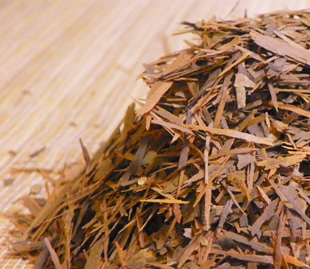Pau d’arco Tabebuia spp

Pau d Arco bark
- Common Names
- Pau d’arco , lapacho, taheebo
- Botanical Name
- Tabebuia spp
- Family
- BIGNONIACEAE
Medicinal Uses & Benefits of Pau D’arco
![]() How to Use|
Side Effects |
Plant & Garden|
How to Use|
Side Effects |
Plant & Garden|
- Medicinal Uses: * Candida/yeast
* Liver
- Properties: * Antifungal * AntiViral * Hepatic * Tonic
- Parts Used: Inner bark
- Constituents: lapachol, lapachone, and isolapachone, tannins
How to Use: Pau d’arco

Pau d’arco fights infections of all kinds
The Mayans and Incas of South America regarded Pau d’arco as an important healing herb, but the scientific study is still very preliminary; the bottom line is that pau d'arco seems to be more promising for fungal infections than malignant cancers.1 There is a great deal of practical evidence, however, that Pau d’arco can be used with success to treat colds, flu, sore throat, and yeast infections. Laboratory evidence suggests that the herb contains compounds that protect against tropical diseases, specifically malaria, schistosomiasis, and tropical fevers. The herb is added to ointments to treat psoriasis, and taken orally to relieve ulcers. 2
Preparation Methods & Dosage :Can be mixed with other herbs to form a pleasant tasting tea, capsules of dried bark, or liquid extract. Pau d'arco tincture should be taken in water with a little lemon juice so tannins can be absorbed
Pau d’arco Remedies
Pau d’arco Side Effects: Many herbs imported from the rain forests of South America are heavily contaminated with pesticides, so insist on organically grown and ethically harvested woods-grown pau d'arco.
Plant Description

Tabebuia impetiginosa trees are found in the wild of central to South American forests.











